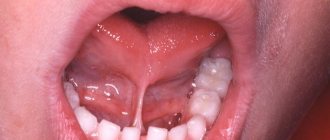Speaking is a skill whose importance is difficult to overestimate. People communicate with each other automatically and do not even think about what speech mechanisms are involved in the process. There are a lot of sounds we pronounce, but pronouncing some of them causes certain difficulties.
Speaking is a skill whose importance is difficult to overestimate. People communicate with each other automatically and do not even think about what speech mechanisms are involved in the process. There are a lot of sounds we pronounce, but pronouncing some of them causes certain difficulties.
Usually, by the age of 4-5 years, a child can already pronounce almost all sounds. Unfortunately, some letters are much more difficult to master than others. Problems often arise with the pronunciation of the sound L. Kids stammer, distort words and “lisp.” And if in kindergarten this causes affection, then at school the inability to pronounce all sounds correctly can become a serious problem. How to teach a child to say the letter L? It turns out that there are a number of effective techniques that can eliminate such a speech defect at home.
Pronunciation L: norm and deviations
For correct articulation, it is necessary that the teeth are not clenched and there is a gap between them. The tip of the tongue is slightly tense and touches the gums of the upper front teeth; it is lowered in the middle and on the sides, and slightly raised at the base. A stream of air comes from both sides between the tongue and cheeks. The vocal cords are used, which give the sound a ringing quality.
Incorrect pronunciation is possible when the position of the speech organs is disturbed:
- the tongue goes too deep into the oral cavity, and its tip does not touch the gums and upper teeth. Instead of L it turns out Y (“shovel” - “yopata”);
- at the moment of pronunciation, a sharp inhalation occurs and the cheeks are involved in the process - it turns out F;
- The lower lip is close to the upper teeth, the tip of the tongue lies at the bottom of the mouth. The result is the sound B (“came” - “stitch”);
- When you exhale, the air flows through your nose. A sound similar to “ng” (“lamp” - “ngampa”) comes out;
- the labial muscles tense instead of the tongue muscles - bilabial pronunciation. It turns out U instead of L (“boat” - “boat”);
- interdental sound is noted. It sounds almost the same as a regular L, but the tip of the tongue is located between the teeth, and not behind the upper incisors.
It is also possible to replace L with D, Y, soft L (“class” - “class”) or complete loss of sound (“fox” - “isa”). In some cases, they first put R, and then - then the child says instead of “moon” - “rune”, and then they put L.
By imitation
A fairy tale about a small steamboat.
Once upon a time there lived a little steamboat, Mickey, who didn’t want to blow his whistle. His mother told him how bad it was, well-mannered boats always honk if they meet other boats on their way. Dad said: “You are so small, they might not notice you in the fog.” One day the following story happened: Mickey got lost. He started playing with funny colorful fish that jumped out of the water. I didn’t notice how the fog rose. He wanted to buzz, but he couldn’t. Let's show him how to buzz.
Show how to lift the wide tongue (I) over the upper teeth (H). If it doesn’t work out, sit in front of the mirror with your baby and show him. Show on your hands - fold your palm into a cup, as if you want to scoop up water (this is Me) and rest it on the other palm, standing on its edge (teeth).
Reasons for violations
There are many possible provoking factors:
- Breathing disorders during speech, for example, with a pathology such as a decrease in lung volume or weakness of the respiratory muscles;
- Problems with speech hearing (the child does not perceive speech well);
- Weakness of facial expressions and tongue muscles;
- Incorrect structure of the frenulum under the tongue.
Often, birth injuries and delayed mental and motor development in infancy and preschool age lead to problems in articulation. It is important to contact a speech therapist in a timely manner to correct the situation.
The stages of setting the sound L are preparation, direct correction and consolidation. It is important to do everything step by step, practicing each step.
When to contact a speech therapist?
By the age of 4, the sound L is easy for the child, he begins to correctly pronounce words with this letter. However, for a number of reasons, kids can distort words:
- forget, skip or not hear “L” (instead of “spoon” says “ozhka”);
- change “L” to “U” or “V” (“lamp” - “uampa”, “Larissa” - “Varisa”);
- instead of “L” say “Y” (“kolobok” - “koyobok”);
- confuse soft and hard “L”.
These errors usually resolve on their own or after a few practice sessions at home. In cases where a child’s speech defect is accompanied by malocclusion or a neurological disease, you should consult a specialist. An experienced speech therapist will prescribe an effective training program and help the child pronounce words correctly.
Preparation for setting L
Before starting classes, demonstrate to your child the correct sound of L. Pronounce a few words clearly so that you can see how the tongue and lips are positioned. Name a few words with the L sound and ask the student to determine which part of the word contains the required phoneme.
An integral element of classes on setting L are preparatory exercises:
- "hammock". The tip of the tongue rests on the front teeth, and the tongue itself arches like a hammock. You need to hold the muscles in this position for several seconds;
- "lollipop". Using a wide tongue, you need to lick your upper lip from top to bottom, while keeping your lower lip motionless. Gradually increase the speed and ask the child to add “bl-bl-bl” sounds when performing the technique;
- "horse". This is a playful way of setting L, beloved by all children. The wide tongue rises and clicks across the palate. The mouth is slightly open, the lower jaw is motionless;
- "swing". Ask your ward to smile widely with an open mouth and rest the hard tip of the tongue first on the back surface of the upper front teeth, and then on the lower ones. 5 – 10 repetitions are required;
- "fungus". The back should be pressed against the upper palate so that the frenulum is slightly stretched. We fix the position for 5 – 10 seconds.
It is worth adding general strengthening exercises - roll your tongue into a tube, “brush” your teeth with it, alternately touch your cheeks. The entire complex must be completed at least 14 days before the start of L’s treatment with a speech therapist.
conclusions
The production and automation of the sound “L” is very important for the further development of a preschooler, because the correct pronunciation of sounds is one of the foundations of reading and writing. To teach your child to pronounce the sound “L”, you can do exercises with your child at home. It is recommended to conduct classes in a playful way (preferably 5-10 minutes daily). With regular practice, your baby will soon be able to pronounce sounds clearly and effortlessly.
Staging methods
First, the articulation of a soft sound is honed, and then a hard one. They use various methods of production: by imitation, mechanical, from other sounds, as well as breathing and articulation exercises. Individual staging is always more effective than working in a group.
By imitation
This is the most common and simplest staging technique and can be done at home. It is necessary to show several times how to correctly position the tongue and lips when pronouncing L correctly. Then the child repeats. To control, touch your cheeks - they should vibrate slightly.
With this setting, the child is asked to feel a warm wave of air on the palm of his hand when pronouncing sounds. Pictures depicting the letter itself and the articulation technique are useful - a visual image helps to quickly master the skill.
Mechanical method
This is a widely used method. Mechanical placement involves the use of auxiliary means - fingers, a spatula, a probe, a wooden stick or the handle of a teaspoon to fix the speech organs in the correct position.
Possible correction options:
- You can create the necessary space between the sides of the tongue and the upper teeth for the correct direction of the air stream using a wooden stick placed across the tongue;
- Holding your lips in a smiling position with your fingers will help correct U to L with bilabial pronunciation;
- Pressing the pad of the thumb or the back of the hand on the dimple under the chin allows you to get a hard sound when pronouncing a soft one.
With a light massage with your fingertips it is easy to relax facial muscles.
From other sounds
In speech therapy there is a method of setting from A. The child pulls out the vowel and pushes the tongue between the teeth, then bites it in the middle. The sound A turns into a solid sound L.
It is possible to set a hard sound L through Y. You need to lightly bite the tip of your tongue and make the Y sound. If everything is done correctly, L will be heard.
There is a more complex variation. The tongue lies halfway between the teeth. You need to start exhaling forcefully. First we do it silently, then we add voice. We hear a noisy hard sound L, which over time becomes clear and distinct.
Diagnosis differentiation
Poor pronunciation of sounds is associated with various problems. Dysarthria is associated with impaired muscle movement. Children change articulation poses poorly and do not feel the movement of their tongue or lips.
Hyper- or hypotonicity is noted. The muscles are very tense or seriously weakened.
Associated symptoms are identified:
- hypersalivation (excessive salivation);
- poor chewing of food;
- problems with fine motor skills;
- weak breathing.
Dysarthria affects only sound pronunciation. The remaining components of speech are not impaired. Children have a vocabulary and formulate phrases grammatically correctly.
With dyslalia, there are disturbances in sound pronunciation. They appear due to defects in the structure of the organs of articulation, somatic weakness, with minimal brain dysfunction.
To make a conclusion, it is necessary to make sure that the child’s hearing is in good condition and that there is no disturbance in muscle tone.
Dysarthria and dyslalia are different diagnoses!
With general speech underdevelopment (GSD), all its components suffer. Children have a limited vocabulary, connect words incorrectly, and pronounce sounds poorly.
A child can pick up an incorrect sound pattern from his parents. The baby perceives the adult’s speech and tries to repeat it.
With alalia and delayed speech development, problems with sound pronunciation are observed. When correcting, much attention is paid to stimulating the appearance of speech, without attaching importance to its correctness.
Correct diagnosis guarantees competent alignment of the correction process. With dysarthria, it will take more time to automate the sound. With OHP, it is important to develop all components of speech.
A preschooler will learn to speak correctly with timely speech therapy assistance. How quickly the correction will take place depends on certain factors: diagnosis, parental involvement, number of classes.
Articulation gymnastics
The set of exercises for setting includes tasks similar to those in the preparatory stage, but they are somewhat more complicated:
- "Window". The mouth is wide open, the teeth are slightly parted, and the tongue lies at the bottom of the mouth. The jaws are motionless and slightly tense. The position is held for up to 5 – 10 seconds;
- "Ladle". The tongue sticks out, and its tip bends like a ladle. The middle part of the tongue does not touch the upper teeth. The position is fixed for a few seconds, then the tongue relaxes and retracts into the mouth. You need to do several repetitions;
- "Panicle". The curved and tense tip of the tongue needs to be moved across the palate at different paces, gradually connecting the voice. The jaw does not move, the teeth are visible;
- "Cup". We make the tongue a “broom”, as in the previous exercise, reaching the palate with the curved tip at the alveoli. The lips take on an oval shape;
- "Harmonic". The tongue is applied to the palate, after which the mouth must be opened and closed, stretching the ligaments well.
The exercises are aimed at increasing the motor activity of the tongue, practicing the desired position, increasing tone and improving the elasticity of the hyoid ligament.
Breathing exercises
Exercises for setting L are combined with breathing techniques to enhance the effect:
- Inhale quickly and exhale smoothly;
- Blow on the turntable for as long as possible;
- Stop the running horse: take a breath, relax your lips, exhale the air to make the sound “prr”;
- Inflate the “ball”: lying on your back while inhaling, strongly protrude your stomach, while exhaling, “deflate”.
You can play a guessing game - ask your child, with his eyes closed, to guess fruits or other objects by smell. For correct setting, all tasks are performed while inhaling.
Sound Automation
After speech therapy, it is important to introduce sound into everyday speech. Fix L first in an independent sound, and then in syllables and words. The secret of the production is in the most comfortable and interesting format - using games, tongue twisters, rhymes, riddles containing words with the desired hard and soft sound.
Examples of using L in syllables, words, tongue twisters:
- syllables: la, klya, lyu, flu, li, gli, le, ple, ol, spruce;
- words: fields, fox, laziness, boat, spoon, drops;
- tongue twisters: “La-la-la - cold earth”, “Spruce-spruce - there are drops outside the window.”
Audio automation is done in stages. Gradually lead your child to compose stories based on pictures or their own memories.
Differentiation L
Staging classes are not the final stage. It is important that the child distinguishes L from similar sounding phonemes. L is differentiated separately, as well as in words and sentences.
We offer the following options for games and activities for individual production:
- “Remember and repeat.” The child is offered cards with printed syllables with the letters L, R, V: ra-la, ru-lu, al-ar, ul-ur, la-va, ul-uv, etc. Cards with words and sentences are gradually added;
- "Find the words in the picture." The baby names words with the letters V, R, L, for example, “watermelon”, “spoon”, “cheese”, “bucket”;
- “Fill in the missing syllables and words.” The child is offered a text with ready-made poems and proverbs, where syllables containing L, R, V are deliberately omitted.
The differentiation of “l” and “l” is carried out according to the same principle - the child learns to distinguish between words with soft and hard sounds. For example, “boat-summer”, “moth-chalk”.
Diagnostic methods
Parents may not notice problems with their child's speech. Therefore, the examination is carried out by a speech therapist. He learns the pronunciation of all sounds. To facilitate the process, special aids are used. They contain pictures with different sound positions (at the beginning, middle and end).
The next part of the diagnosis is a speech hearing examination. Consistently, the child is asked to identify pictures for a given sound and name the first sound in the word.
They test the ability to combine objects, eliminate unnecessary ones and tell the features of using things. They study the grammatical design of speech, understanding prepositions and words with different stresses (lock - lock).
The speech therapist examines the articulatory apparatus and draws conclusions about its structure. They will check the muscle tone: if it is elevated, they will be tense, the tongue will stand in a lump in the mouth. When weakened, he is lethargic and motionless.
Based on the diagnosis, a conclusion is made and a corrective route is built.
Improving speech hearing
Correct formulation of L is impossible without comprehensive development. To improve speech hearing, the following exercises are recommended:
- Pronouncing words at different volumes - from quiet to loud and back again. You can show toys, explaining that the little one speaks quietly, and the big one speaks loudly, then vice versa;
- Reading fairy tales in roles with voice acting of characters in different voices - loud and quiet, low and high;
- Showing pictures and deliberate mistakes in naming words. The child must “catch” you and identify incorrectly designated words;
- Working with pictures that show several words that are similar in pronunciation. The baby must name them correctly. For example, “bow-luk-meadow”.
Do your workouts regularly, supplementing them with games to music. An important element of success is discipline. Teach your child not to miss classes and to work persistently. Think about the motivation - talk about the joys of communication with correct speech. Be patient and tactful, do not criticize for mistakes and failures. Everything will work out!
Preparatory stage
The child is explained how to pronounce the letter “L” and shown how it should sound. To develop phonemic awareness, words are named and asked to be identified by ear.
Then breathing exercises are performed to form a targeted air stream.
For example, playing table football with a foam ball or the “Hippopotamus” exercise, as in the picture.
At this stage, due attention is paid to articulation warm-up.











